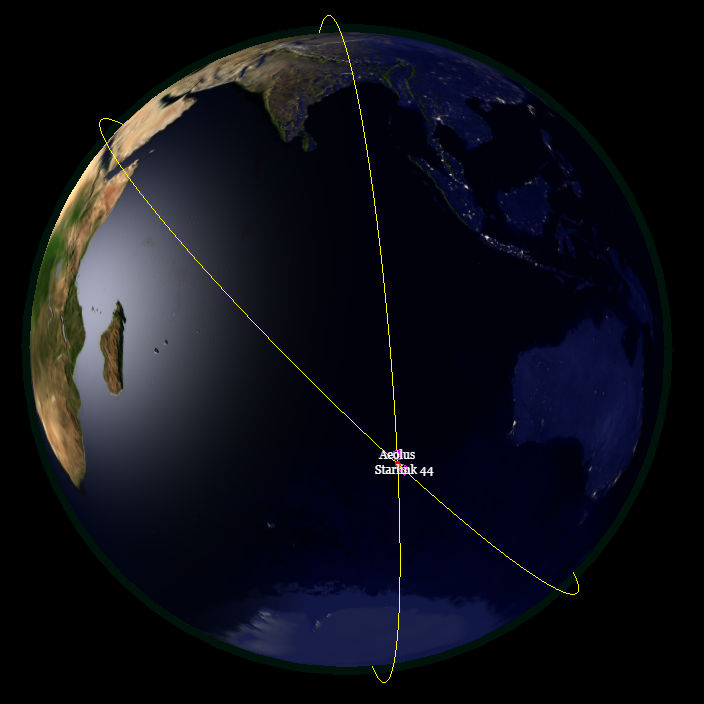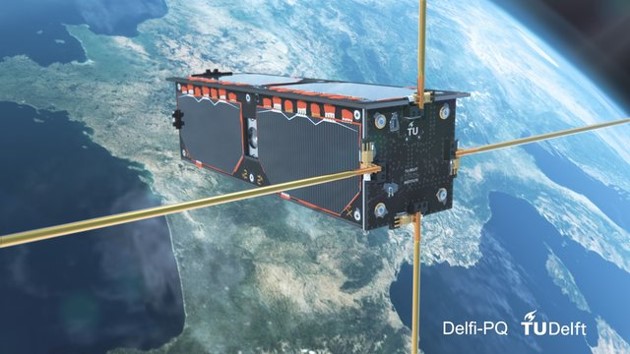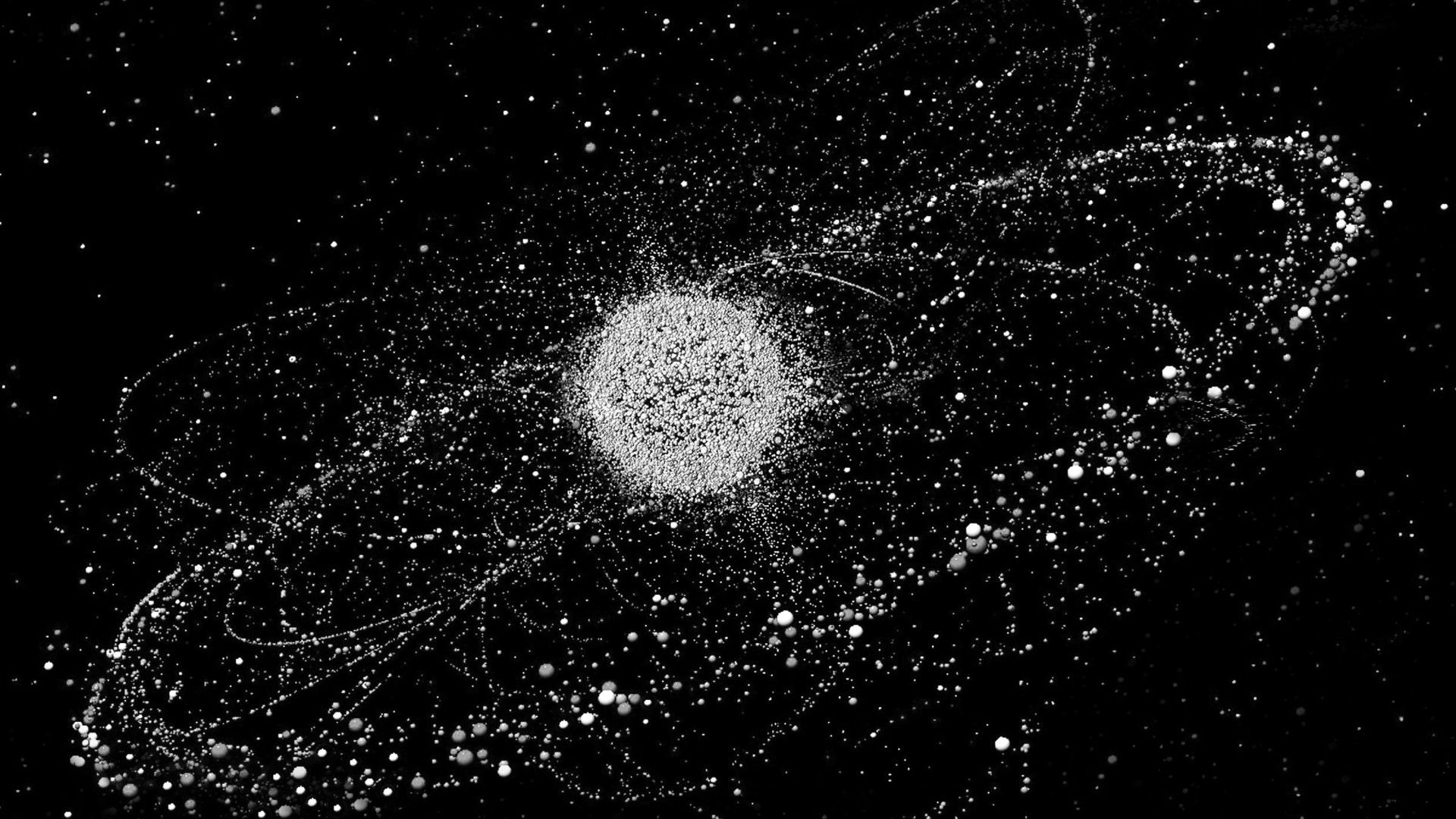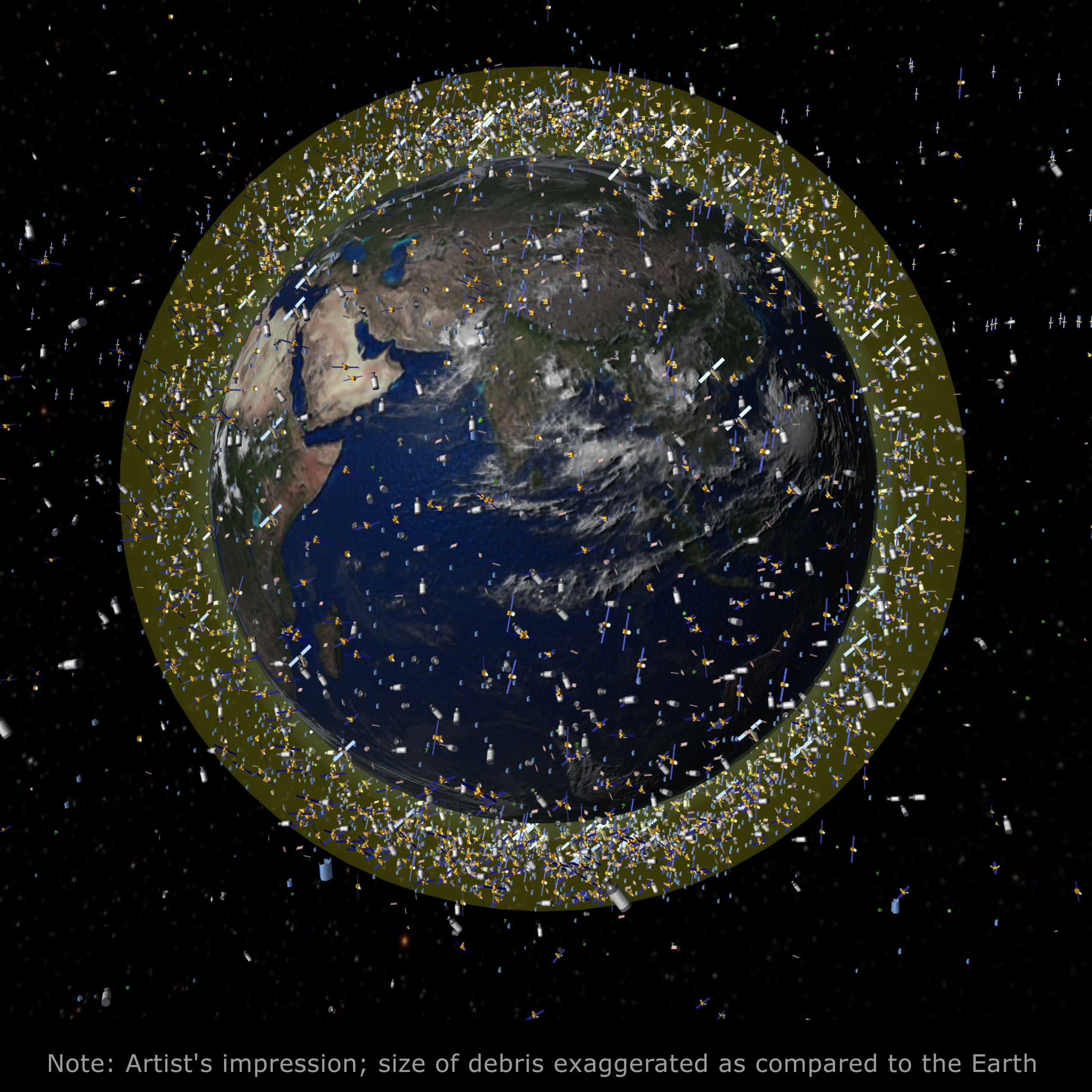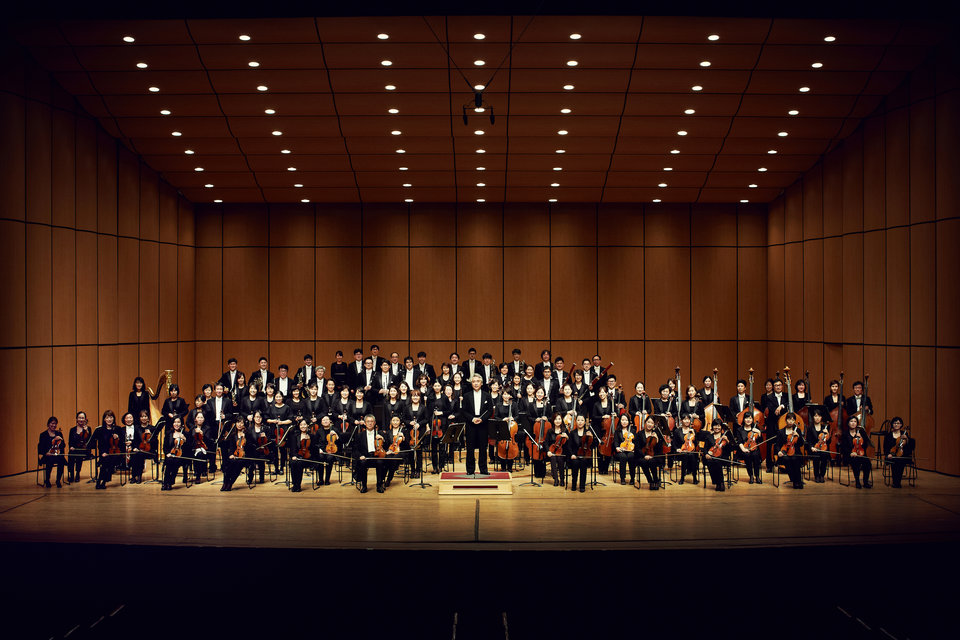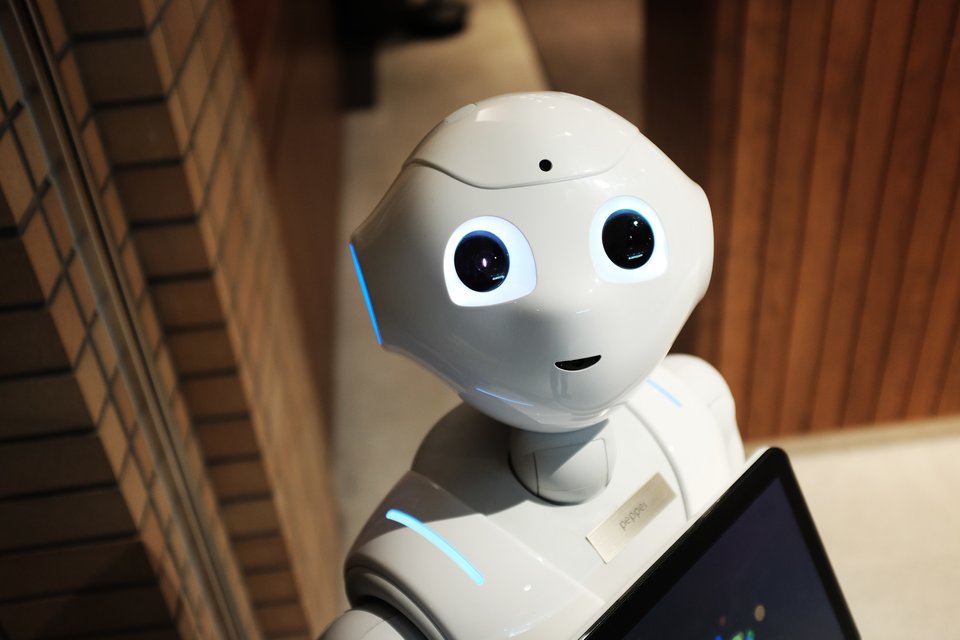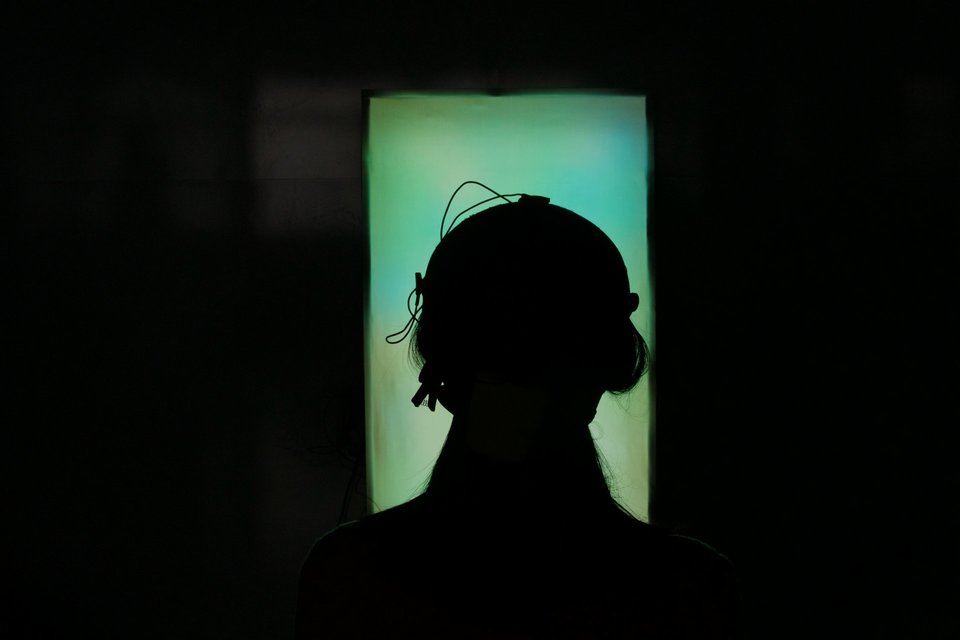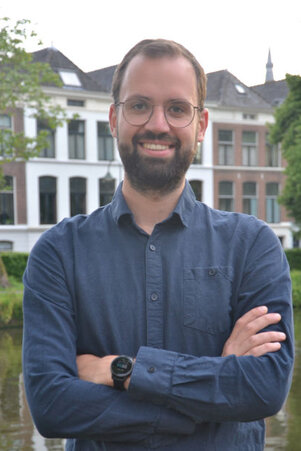A more accurate prediction of near-collisions between satellites with the DelftBlue supercomputer
Even though extremely low, the air resistance at altitude of 600 km does affect the accuracy with which (near-)collisions between satellites can be predicted. Aiming to improve these predictions, Rens van der Zwaard used the DelftBlue supercomputer to determine mission parameters for an experiment involving two nearly identical satellites.
Infinite as space may seem, there are now so many satellites orbiting the Earth that near-collisions do frequently occur. In a worst-case scenario, an actual collision will initiate a chain-reaction of ever-increasing space debris, rendering space unreachable for rockets and new satellites. Aiming to avoid such a scenario, operators of manoeuvrable satellites receive a warning e-mail a few days in advance based on calculations conducted by the US Space Force. The operators may then perform a course correction at the cost of precious satellite fuel.
In addition to variations in gravity and solar radiative force, air resistance also plays an important role in predicting the orbit, and thereby the collision probability, of satellites up to an altitude of 600 km. ‘An important parameter determining the air resistance is the so-called energy accommodation coefficient. It quantifies the transfer of momentum from air particles to the satellite,’ says Rens van der Zwaard, PhD-student at Space Systems Engineering. ‘The goal of my research is to reduce the uncertainty in this parameter, ultimately decreasing the need for course corrections. This, in turn, extends the useful lifespan of satellites and will allow us to put more satellites into almost overlapping orbits.’
Too fast for a wind tunnel
What makes this a difficult problem to tackle is the fact that, at that altitude, satellites are bombarded with particles travelling at a relative speed of 7 km per second in near vacuum. No wind tunnel on earth can replicate these circumstances. ‘My task was to design an experiment using two mini-satellites that would allow us to accurately determine the energy accommodation coefficient.’
It was soon decided that the two satellites (of 5x5x15 cm3) would fly in formation and only differ in shape. However, given that it was going to be a one-time experiment, the remaining mission parameters needed to be optimally chosen. ‘The measurement equipment built into the satellites, the satellite mass, shape, orbit and orientation with respect to that orbit; I wanted to compare a large range of mission parameters.’
DelftBlue to the rescue
His laptop needed to crunch numbers for four hours to simulate a full day’s flight of one of the satellites. However, taking into account the variation in all the mission parameters would increase this calculation time a thousandfold. ‘DelftBlue had only just come online when I started my PhD in 2022. I quickly realised that I would end up using it – that it would enable a comprehensive search for the optimal mission parameters.’
The obvious advantage of using a supercomputer is that it allows calculations to run in parallel. Rens split his simulations into hundreds of small jobs (computational tasks) that each took a few hours to run, with all of them completed after about a week. ‘I repeated this multiple times – sometimes because of an error in my code, but more often because of improvements in my models.’
Millions of files
Sometime during his, PhD Rens received an e-mail from the DelftBlue support team. ‘The jobs I submitted put a significant load on the file system,’ he says. ‘Each of my jobs created about half a million files containing information on various parameters. At first I thought I was being reprimanded, but they contacted me purely out of interest. They wanted to understand what I did and use these findings to further improve the DelftBlue system.’
It turned out that a Computer Science student was studying the DelftBlue filing system as part of his master’s thesis. He and his supervisor joined Rens for a discussion. ‘They advised me on reading and writing files more efficiently. The subsequent modifications to my code significantly reduced the load on the filing system and also made my jobs run a bit faster.’
In general, breaking up tasks into smaller jobs and then requesting computation time on individual CPUs, instead of entire nodes, reduces the wait time before job execution, as the scheduler can assign it to open slots on partially filled nodes. As of 1 September, DelftBlue also offers a dedicated compute partition for small GPU jobs not exceeding a four-hour runtime – which is particularly beneficial for experimental and development work. Additionally, some CPU-nodes are now dedicated to jobs with runtimes of less than four and twenty-four hours. Users can take advantage of this by setting a smart runtime when submitting their jobs.
Advanced course
Loads of praise from Rens for the DelftBlue support team. ‘Supporting the researchers really is their top priority. The documentation is great too. I had some experience using external servers, but DelftBlue performs exceptionally well.’ One improvement he would like is for the administrators to offer a course for more advanced users, including guidance on process parallelization and the functioning of the file system. ‘You now only enhance your coding skills after running into substantial problems.’
Launch date
The good news after many weeks of simulations is that the optimal design for both satellites is within the capabilities of Rens’ department to construct. This includes a GPS sensor that enables tracking of the satellite orbits with an accuracy of 10 cm. On the downside, it is unlikely for the satellites to be launched during his PhD. ‘The nominal planning is for them to be launched near the end. However, in aerospace, the nominal launch date is a flexible concept.’
In the meantime, he’ll continue to put DelftBlue to good use. For one, he plans to estimate how an enhanced value for the energy accommodation coefficient will impact the uncertainty in predicting (near-)collisions between satellites. He additionally aims to perform calculations on existing satellites that have a similar GPS sensor, thereby also reducing the uncertainty in the coefficient. ‘I will definitely continue using DelftBlue for the remainder of my PhD.’

